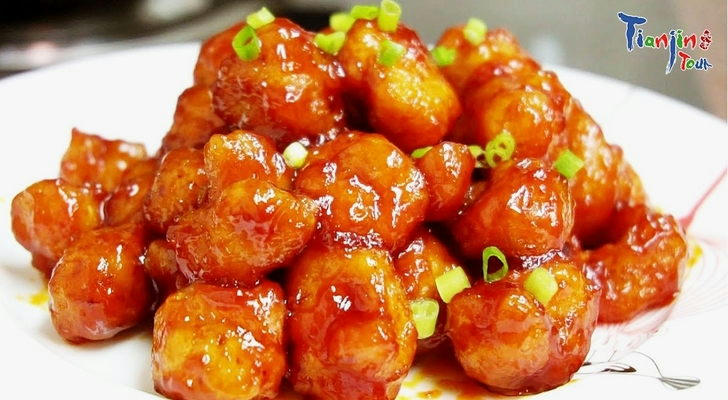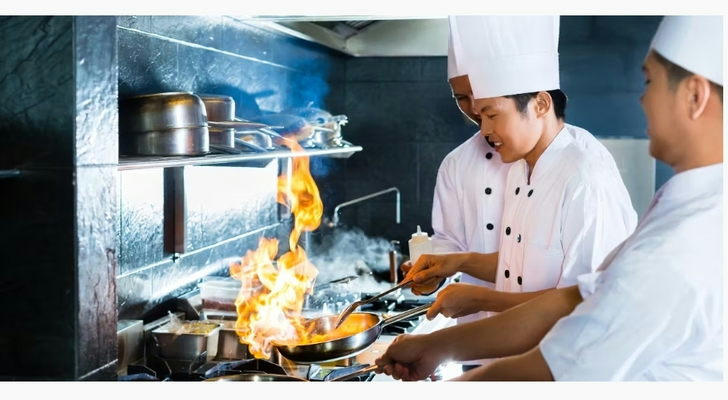Chinese Culinary Chef Certification

Chinese cuisine, known for its diversity, intricate techniques, and cultural richness, has gained global recognition in recent decades. Behind the rising popularity of Chinese food lies a growing demand for skilled culinary professionals who are formally trained and certified. The Chinese Culinary Chef Certification system plays a pivotal role in ensuring that chefs meet professional standards, maintain food safety, and uphold the traditions of Chinese gastronomy while adapting to modern innovations.
Understanding the Chinese Culinary Certification System
China's culinary profession is regulated under a tiered certification system developed by the Ministry of Human Resources and Social Security (MOHRSS). This system aims to provide standardized qualifications for chefs and to support the development of the national vocational education framework. The certification is typically divided into three major levels:
- Primary Level (Junior Chef): For beginners or those new to the industry. It emphasizes basic cooking techniques, safety protocols, and culinary theory.
- Intermediate Level (Mid-level Chef): For chefs with several years of experience, demonstrating skill in multiple regional styles and more complex dishes.
- Advanced Level (Senior Chef): For experts who have not only technical mastery but also the ability to manage kitchens, train apprentices, and innovate in recipe design.
Additionally, there is the "Special Technician" level, which is often granted to chefs with outstanding achievements or contributions to the field. Certification at this level may require assessments from national-level panels and evidence of influence within the industry.

Why Certification Matters
The Chinese Culinary Chef Certification is more than a formal credential—it's a symbol of professional integrity and skill. The certification offers several tangible benefits:
- Standardization and Skill Validation: Certification verifies a chef’s ability to prepare food according to established safety and quality standards. According to MOHRSS, more than 60% of employers in the hospitality industry consider formal certification a key hiring criterion.
- Cultural Preservation: With over 8 recognized regional cuisines (e.g., Sichuan, Cantonese, Shandong, and Huaiyang), certification ensures the transmission of authentic practices to future generations.
- Career Advancement and Recognition: Although no specific salaries are disclosed, certified chefs are more likely to gain managerial roles, training responsibilities, or opportunities abroad.
- Compliance with National Standards: Certified chefs contribute to food safety, which is a growing national concern. A 2023 report by China’s State Administration for Market Regulation emphasized the need for standardized culinary practices to reduce food safety incidents, 70% of which were linked to improperly trained staff.
Certification Requirements and Eligibility
To obtain certification at any level, candidates must meet specific educational and practical criteria, which generally include:
- Educational Background: A minimum level of formal education (usually junior high school) is required for primary certification, while advanced levels may require vocational culinary training or equivalent work experience.
- Practical Experience: Work experience is critical. For instance, a candidate for intermediate certification typically needs 3-5 years of hands-on culinary experience or a recognized diploma in culinary arts.
- Technical Skills: Candidates are assessed on knife skills, ingredient processing, cooking methods (e.g., stir-frying, steaming, braising), food presentation, and knowledge of regional flavors.
- Theory Examination: A written test covers hygiene standards, nutrition, food chemistry, and Chinese culinary history.
- Practical Examination: Applicants prepare designated dishes within a specific time, evaluated by certified examiners on taste, technique, hygiene, and innovation.
Certification Process: Step-by-Step
Becoming a certified Chinese culinary chef involves a clear but rigorous process. Here are the essential steps:
- Choose Certification Level: Determine the level that suits your current skills and experience. Beginners typically start with primary-level certification.
- Enroll in a Training Program: Enroll in a vocational culinary school or an accredited training center recognized by MOHRSS. These institutions offer structured curricula covering practical and theoretical knowledge.
- Fulfill Practice Hours: Gain practical experience through internships or full-time employment in a certified kitchen. Some provinces require logbooks or proof of mentorship under a senior chef.
- Apply for Examination: Submit an application through a regional Human Resources and Social Security Bureau. This includes documentation of identity, training, and work history.
- Take the Examination: Exams include both written and practical components. The practical test is often conducted in a timed, real-kitchen simulation.
- Receive Certification: Successful candidates receive a nationally recognized certificate, which is valid across the country and may be recognized by international culinary bodies under certain bilateral agreements.
- Optional: Apply for Higher Certification: With experience and continued learning, chefs can progress to higher certification levels.
Accredited Training Institutions
A growing number of institutions across China and abroad offer training for chef certification. Among the most prominent are:
- China Cuisine Association (CCA): An industry body offering training, workshops, and examination support for certification candidates.
- Beijing Jinsong Vocational School: Known for producing award-winning chefs and offering advanced modules in Chinese culinary arts.
- New East Culinary School: One of China’s largest culinary education providers, with campuses in multiple cities and programs aligned with national standards.
It is critical to verify that a training institution is MOHRSS-accredited, as only graduates from such institutions are eligible for official certification exams.
Future Trends and International Recognition
As Chinese cuisine gains international influence, there is increasing interest in aligning Chinese culinary certification with international standards. The World Association of Chefs’ Societies (WACS) has begun to recognize some Chinese certification levels, facilitating greater global mobility for Chinese chefs.
The rise of online culinary education platforms is also shaping the future of certification. MOHRSS launched a digital platform in 2024 allowing partial completion of theory courses and practice logs online, though in-person practical testing remains mandatory.
Additionally, in response to the growing popularity of plant-based and health-conscious Chinese cuisine, newer modules have been added to the curriculum, such as low-oil cooking, food allergen management, and traditional Chinese medicinal (TCM) cooking principles.

Conclusion
The Chinese Culinary Chef Certification is a comprehensive, standardized system that fosters professionalism, safety, and cultural preservation in one of the world’s most respected culinary traditions. With structured levels, rigorous exams, and growing international recognition, certification opens the door to professional development, culinary excellence, and cultural exchange.
Whether aspiring to work in a Michelin-starred Chinese kitchen or to preserve family recipes with modern flair, the certification provides a pathway for chefs to refine their skills, validate their expertise, and contribute meaningfully to the rich tapestry of Chinese culinary arts.
